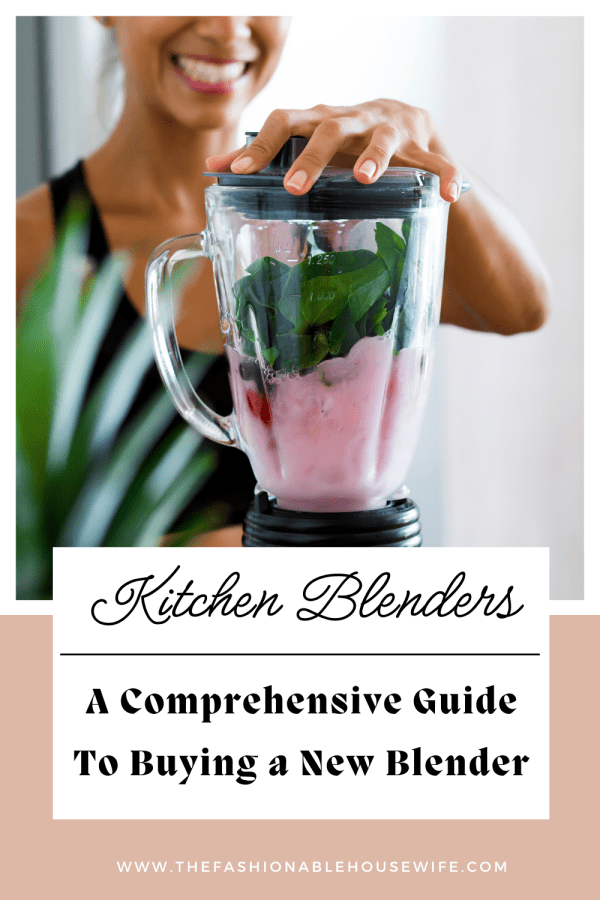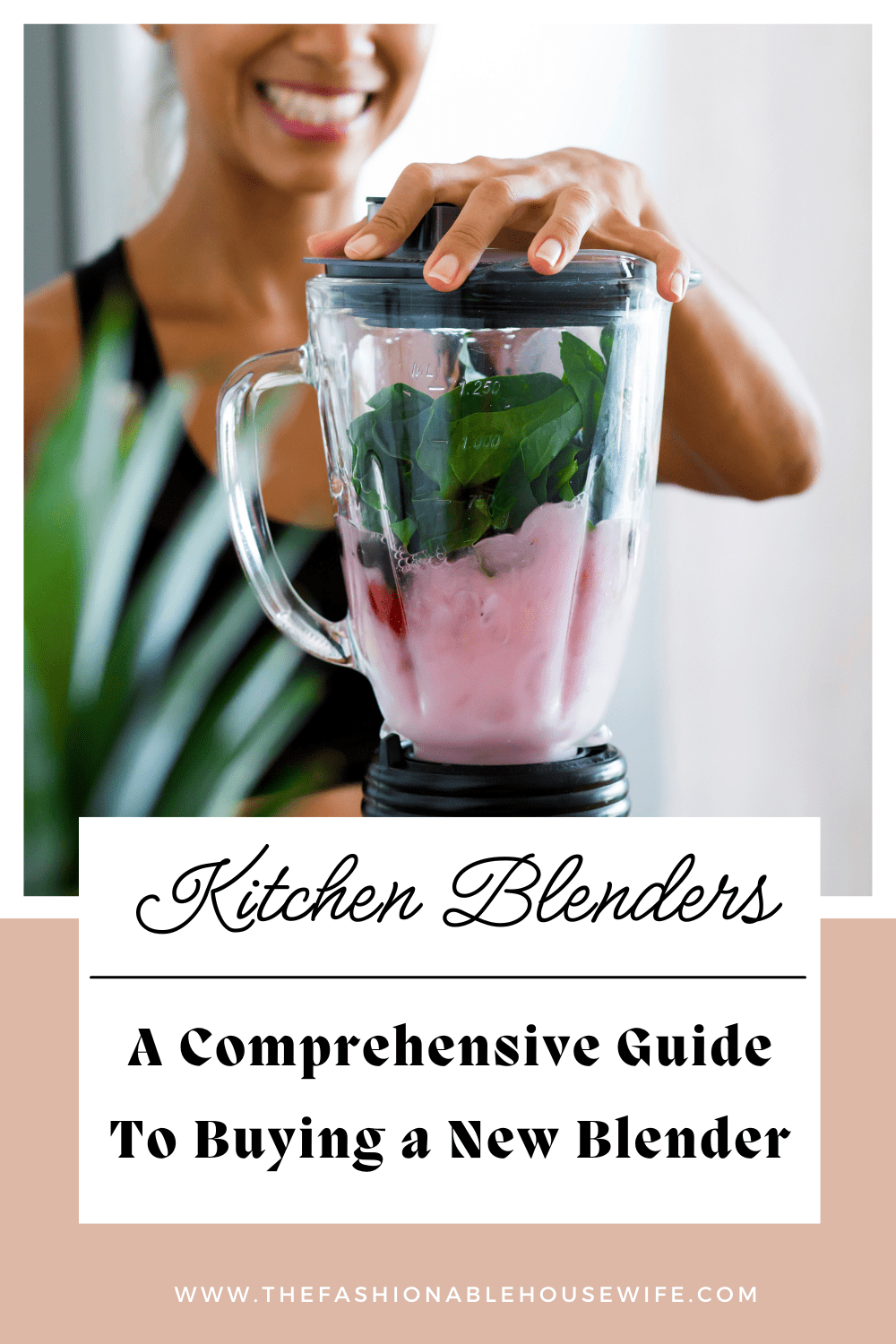Kitchen Blenders: A Comprehensive Buyer’s Guide

Whether you’re a smoothie enthusiast, a souper-inclined foodie, or an aspiring mixologist, choosing the perfect blender can make a world of difference in your culinary adventures. This article is designed to help you navigate the vast sea of options available, ensuring you find a blender that not only meets but exceeds your specific needs.
Start by exploring the diverse types of blenders on the market, from personal to professional, immersion to countertop, each with its unique features and benefits. Next, take a deep dive into the key considerations that should influence your purchase, including power, speed settings, capacity, and blending functions. You’ll learn about the importance of durability, noise levels, and ease of cleaning, as well as the often-overlooked factors of design and footprint.
The kitchen blender is a quintessential tool for modern culinary enthusiasts, offering a versatile solution for a wide range of tasks such as making smoothies, soups, sauces, and even crushing ice. With an extensive selection available on the market, choosing the right blender can be an overwhelming experience. To ensure you select the best blender for your needs, consider the following factors before making a purchase.
1. Types of Blenders
Blenders come in various shapes and sizes, each designed to cater to different user requirements. The most common types include:
? Countertop Blenders. These are the classic stand-alone models that can be found in many kitchens. They come in different sizes and power levels, making them suitable for a wide range of tasks.
? Immersion Blenders. Also known as stick blenders, these are handheld and perfect for blending soups, sauces, and other liquids directly in the pot or container.
? Personal Blenders. Compact and portable, personal blenders are ideal for making single-serve smoothies and come with travel cups for on-the-go use.
? High-Performance Blenders. These heavy-duty blenders boast powerful motors and are capable of handling tougher ingredients, like ice and nuts, making them perfect for professional kitchens and those who require more advanced blending capabilities.
? All-in-One Blenders. These multi-functional blenders often come with various attachments, allowing you to perform a range of tasks from chopping vegetables to making nut butter.
Before purchasing a blender, think about the primary functions you intend to use it for and the amount of space available in your kitchen to determine which type is best for you.
2. Power and Performance
The power of a blender is measured in watts and typically ranges from 300 to 1500 watts. A higher wattage generally translates to better performance and the ability to blend tougher ingredients. Consider the following factors when evaluating the power of a blender:
? Motor Strength. A more powerful motor can handle ice, frozen fruits, and nuts more efficiently.
? Speed Settings. Multiple speed settings allow for better control over the blending process, resulting in smoother textures and more precise outcomes.
? Pulse Function. This feature is useful for controlling the consistency of your blend, especially when dealing with chunky ingredients.
? Blending Time. High-powered blenders can process ingredients faster, saving you time in the kitchen.
If you plan to use your blender frequently or for demanding tasks, opt for a model with a minimum of 500 watts. For everyday use, a blender between 300 and 500 watts should suffice.
3. Blender Features and Functionality
Modern blenders come with a plethora of features that can enhance your blending experience:
? Jar Size. Larger jars are suitable for blending for a crowd, while smaller ones are great for individual servings.
? Material. Look for jars made of durable materials like glass or BPA-free plastic to avoid chemical contamination and ensure longevity.
? Ease of Cleaning. Some blenders have self-cleaning cycles, while others come with dishwasher-safe parts for easy cleanup.
? Noise Level. High-powered blenders can be noisy; consider a model with noise-reducing features if you’re sensitive to noise.
? Controls. Digital controls offer precise speed settings and often include pre-programmed functions for specific recipes.
? Jug Design. A good grip and a lid that seals properly are essential for safe and mess-free blending.
? Accessories. Additional attachments like a food processor bowl, dough hooks, or juicer can increase the blender’s versatility.
Evaluate your needs and select a blender that offers the features that align with your cooking habits and preferences.
4. Price Range
Blenders are available at various price points, from budget-friendly options to high-end models with professional features. Set a realistic budget before you start shopping and consider the following:
? Affordability. Decide how much you’re willing to spend based on the frequency of use and the blender’s expected lifespan.
? Warranty. More expensive blenders often come with longer warranties, providing peace of mind against potential defects.
? Brand Reputation. Reputable brands may cost more but often offer better quality and customer support.
? Durability. Investing in a more expensive, durable blender might save you money in the long run by avoiding frequent replacements.
While it’s tempting to opt for the cheapest model, consider that a well-constructed blender can last for years with proper care, making the higher initial cost worthwhile.
5. Reviews and Recommendations
Before making a final decision, read reviews from other consumers and consult with friends and family who own blenders. Look for:
? Performance Consistency. Check if the blender consistently delivers good results over time.
? Ease of Use. Is the blender easy to assemble, operate, and clean?
? Noise Level. How loud is the blender during operation?
? Durability. Does the blender hold up under regular use?
? Reliability. How often do users encounter issues with the motor or blades?
Reviews can provide valuable insights into a blender’s performance and quality, helping you avoid common pitfalls.
Choosing the right kitchen blender involves considering your specific needs, available space, and budget. With so many options on the market, it’s essential to evaluate factors such as power, features, and brand reputation to ensure you select the best blender for your kitchen. Whether you’re a smoothie aficionado or an aspiring chef, the perfect blender can streamline your cooking and create a more enjoyable culinary experience. Remember to read reviews and recommendations to gather real-world feedback before making your purchase. With the right blender, you’ll be whipping up delicious recipes in no time, turning your kitchen into a hub of creativity and nourishment.

